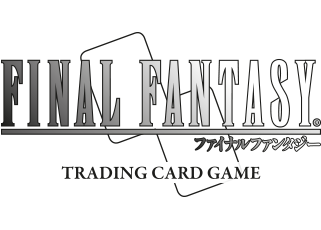
Greetings, everyone! This is FF-TGC Producer, Tarou Kageyama. This is going to be our final spoiler from Opus X: Ancient Champions. As RB mentioned last time, I would like to introduce a villain from FINAL FANTASY III once again. As you may have noticed, my recurring theme was to introduce villains from FINAL FANTASY III. And so it is only natural that I close it out with this infamous character: the most formidable foe in FINAL FANTASY III, [10-028L] Cloud of Darkness!
Up to this point, there have been three cards in FF-TCG that have the name [Cloud of Darkness]. Among those, two are Water-based, and one is Darkness-based. Cloud of Darkness [10-028L] is unlike its predecessors, and its element is Ice. In this game, there are general roles based on the element of the cards, and so having a new element could potentially mean having abilities that are different from what we’ve been used to. Let’s jump right in and look at those abilities.
 |
Cloud of Darkness [10-028L] is what you may consider a standard-sized card, with a cost of 4CP and 8000 power, and it has two auto-abilities. The first one says: “When Cloud of Darkness enters the field, you may put 1 Character you control into the Break Zone. When you do so, your opponent selects 1 dull Forward he/she controls. Put it into the Break Zone.” Doesn’t it feel like this ability somewhat retains its Water-based origins? I’m reminded of Famfrit, the Darkening Cloud [3-123R] and its ability. At first glance, you might think it’s a one-to-one exchange, but you can choose any character with the Cloud of Darkness, plus your opponent is forced to choose one of their Forwards, which makes her powerful. You can choose to place one of your five Backups to free up space after it has served its purpose, or you may choose to leverage cards like Schrodinger [5-129C], whose work is essentially finished after it first enters the field. You still have to consider when to play the card, because you’re limited to dull Forwards and the opponent must choose which one, but it is still a sufficiently powerful ability.
The second ability reads: “When Cloud of Darkness attacks, each player selects up to 2 active Characters he/she controls (select as many as possible). Dull them and Freeze them.” “Dull” and “Freeze” – now we’re sounding more like an Ice card. Being able to dull and free TWO active cards when attacking means there is a better chance of your attack getting through. That being said, you will have to be careful, since the same effect will apply to the side controlling Cloud of Darkness [10-028L] as well. But, the condition is “active Characters,” so generally you won’t have to freeze the cards you are using to attack. You could possibly create a situation where both you and your opponent’s cards are all dulled and frozen, which leaves them open for you to attack continuously; if that happens, then it should not be difficult for you to achieve victory. Furthermore, and this might go against the theory, but if you make sure to dull as many Backups as possible before you attack, they won’t get frozen, so you can preserve your source for CP for each turn.
 |
 |
As you can see, Cloud of Darkness [10-028L] has two very interesting abilities; now, let’s look at some cards that play very well with this card. If we take the first ability into consideration, then cards like Gumbah [5-033R], who has no disadvantages with being placed in the Break Zone, or Bablizz [7-038C], who truly shines after being placed in the Break Zone, would work great. Both of these are the same Ice element as Cloud of Darkness [10-028L], so there should be no issues with incorporating this into the deck.
 |
 |
As for leveraging the second ability, it would be most effective to choose cards that pare down your opponent’s options. In other words, you want to keep your opponent’s characters dull as much as possible. Garland (IX) [8-026L] is a great card for this purpose. Or, cards that can dull characters, such as Squall [9-027H] would help boost this ability as well.
 |
 |
By the way, potency aside, one combination I personally like is The Emperor [1-185H] and The Emperor [7-091H]. Use Cloud of Darkness’ [10-028L] first ability to place The Emperor [1-185H] in the Break Zone. When you do so, the abilities of Cloud of Darkness [10-028L] and The Emperor [1-185H] will stack at the same time. First, resolve The Emperor [1-185H], then bring in The Emperor [7-091H]. Once that’s done, even if there were no dull Forwards on your opponent’s side, The Emperor [7-091H] will allow for you to dull two of your opponent’s Forwards. You can then use Cloud of Darkness' [10-028L] subsequent "When you do so" auto-ability to make your opponent place one of those two cards into the Break Zone. Additionally, when your opponent happens to dull one of their Forward due to Cloud of Darkness’ [10-028L] second ability, The Emperor [7-091H] can deal 3000 damage to an active Forward your opponent controls. Isn’t this an interesting combination?
There you have it. As mentioned at the beginning, this is the last of the Opus X spoilers. Soon we will have the Pre-release tournaments, then the 2019 World Championship, the Winter Cup, and in Japan, the third Masters tournaments. I hope this helps you to get a head start on gleaning information on the true potential of the Opus X cards, and lead you victorious in your environment!
